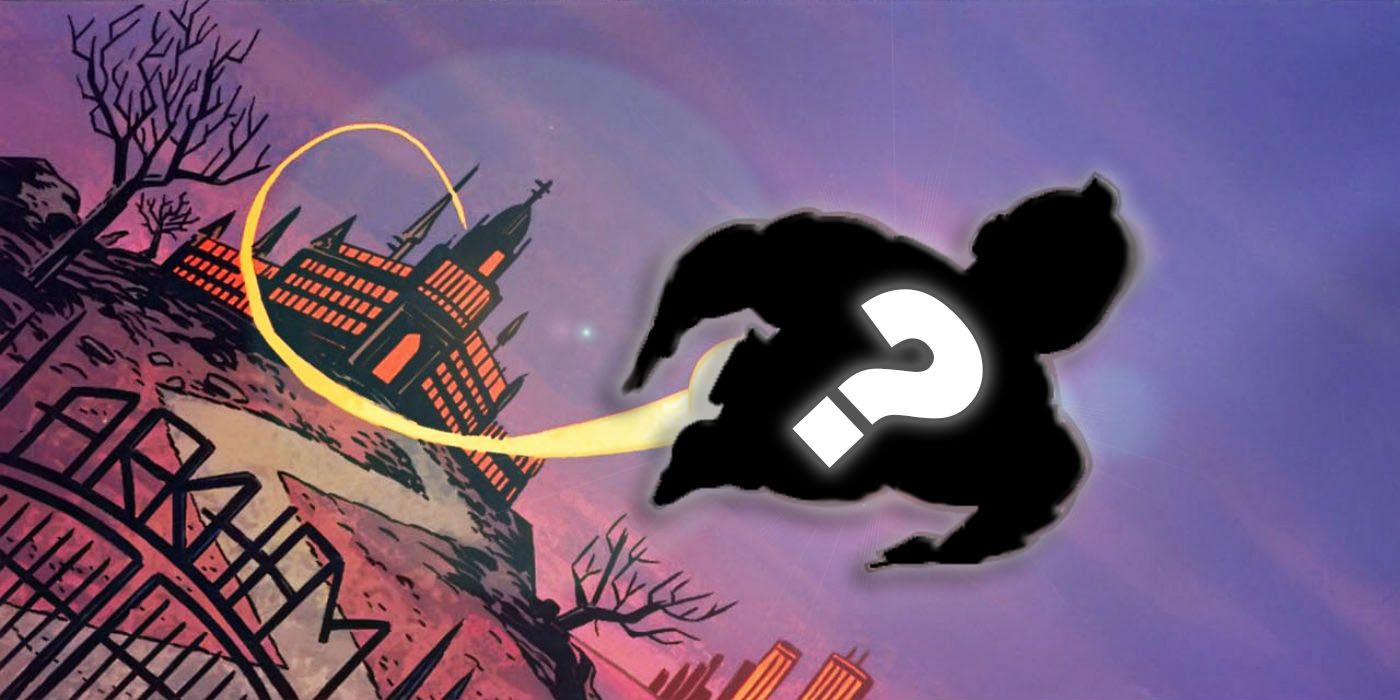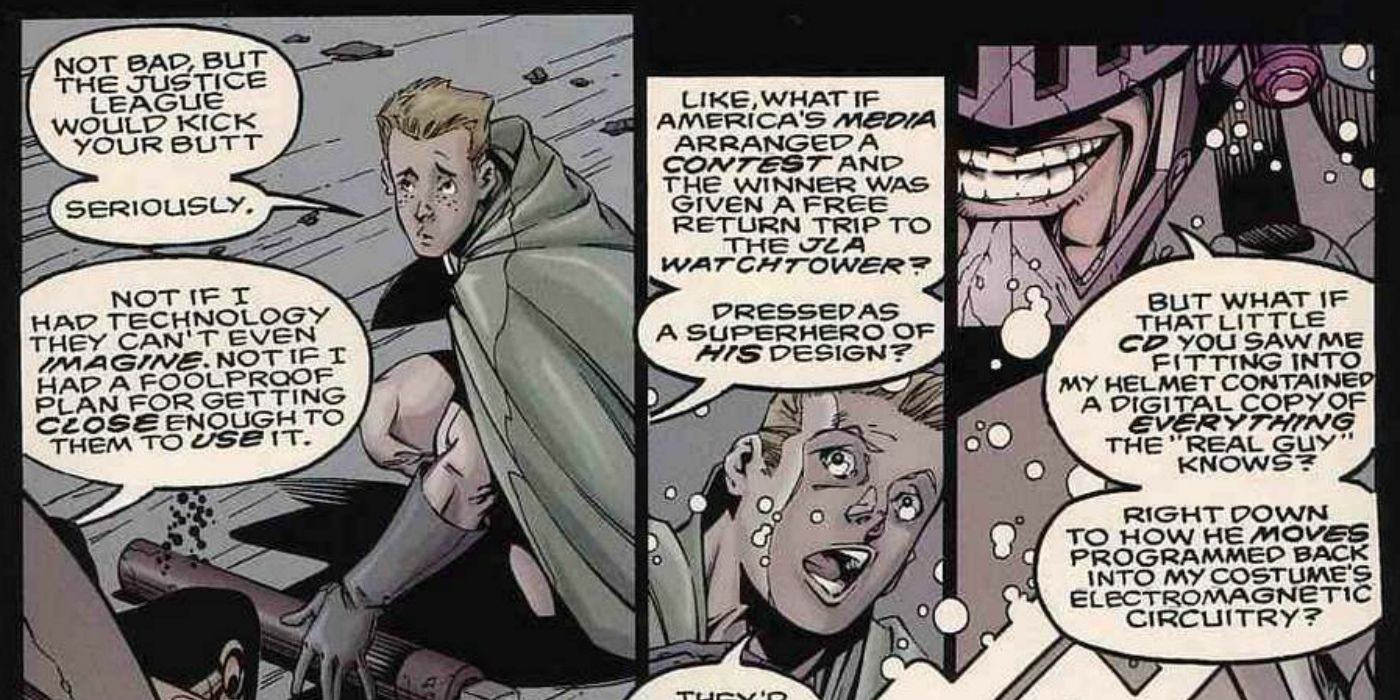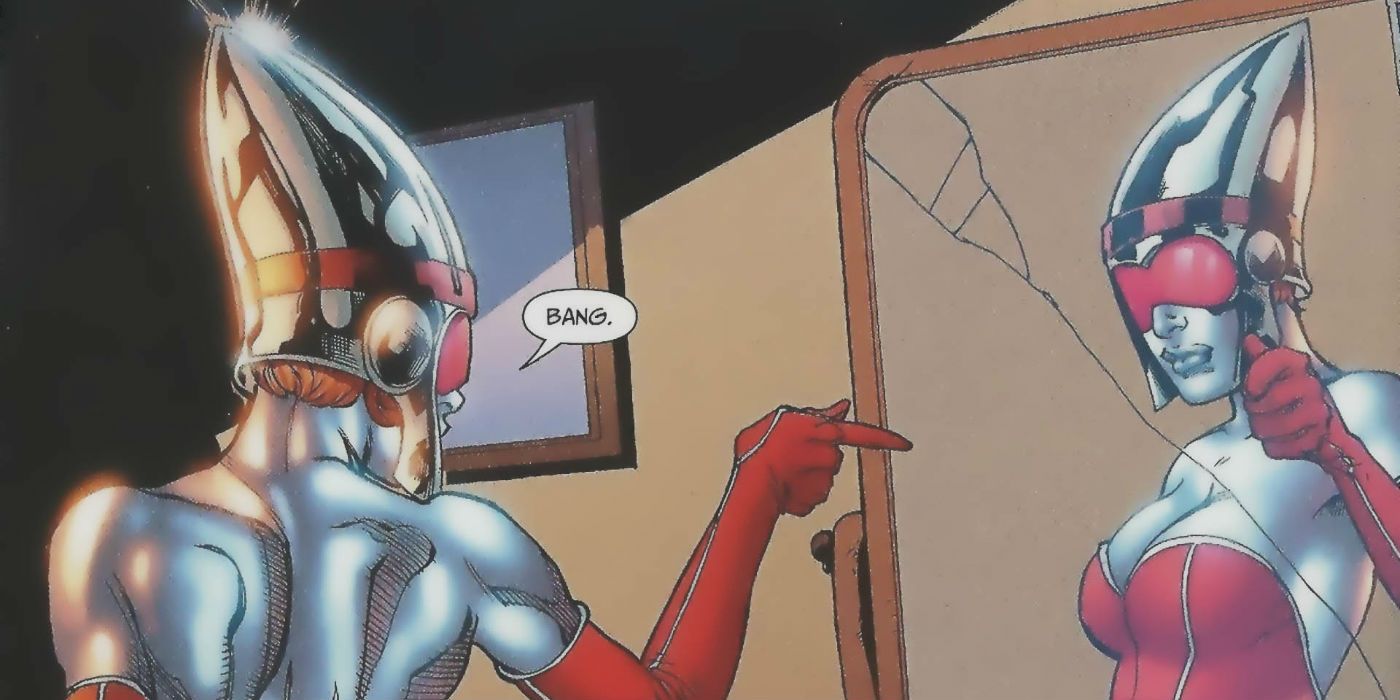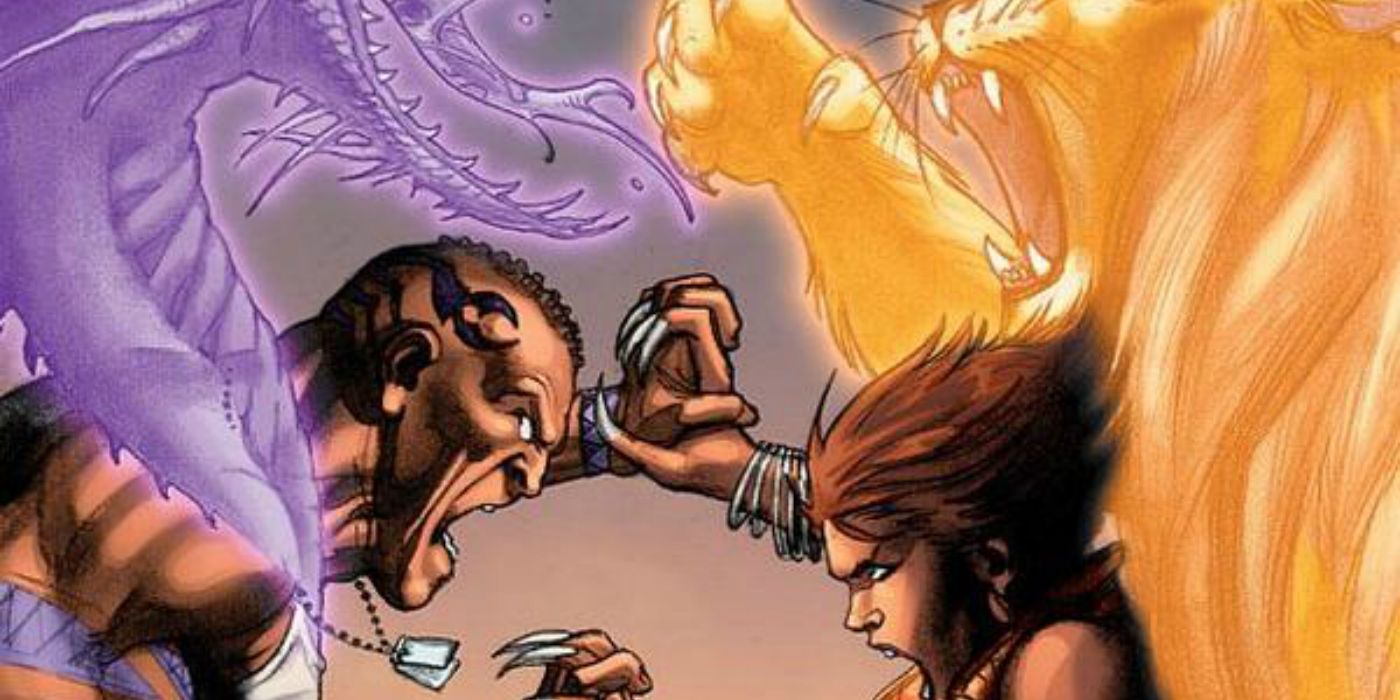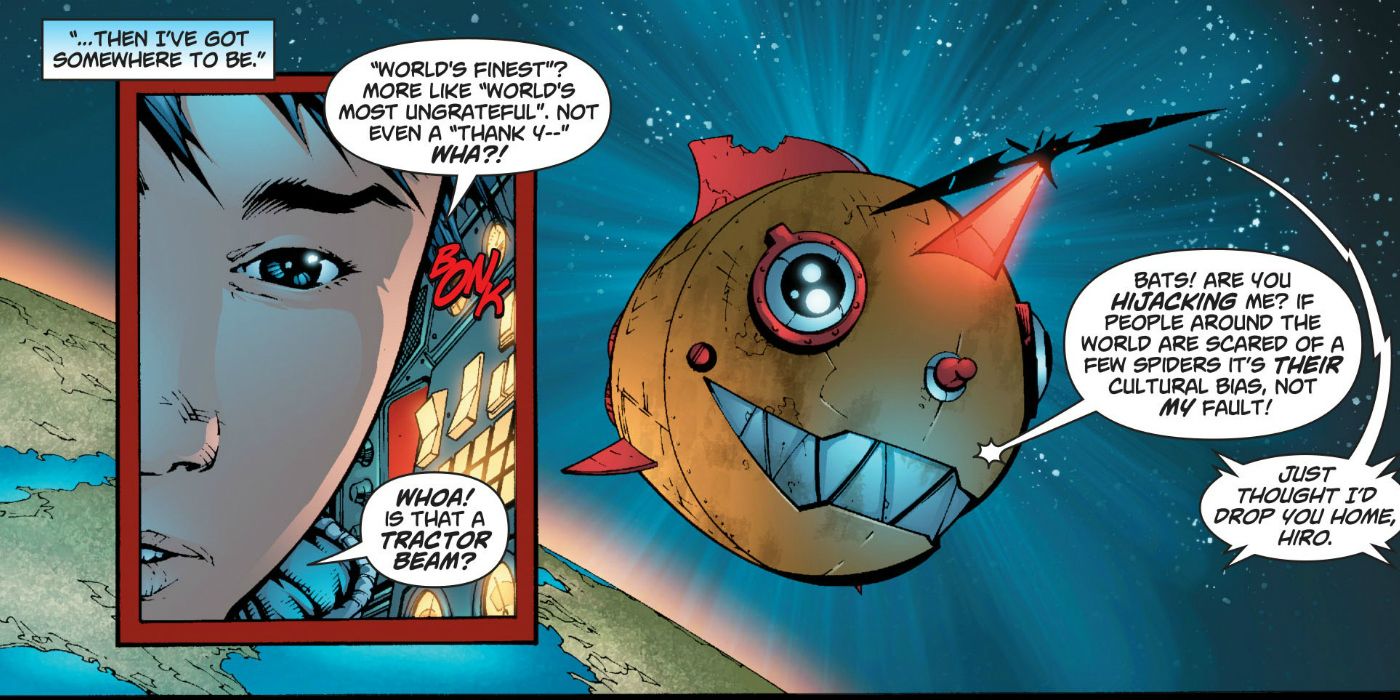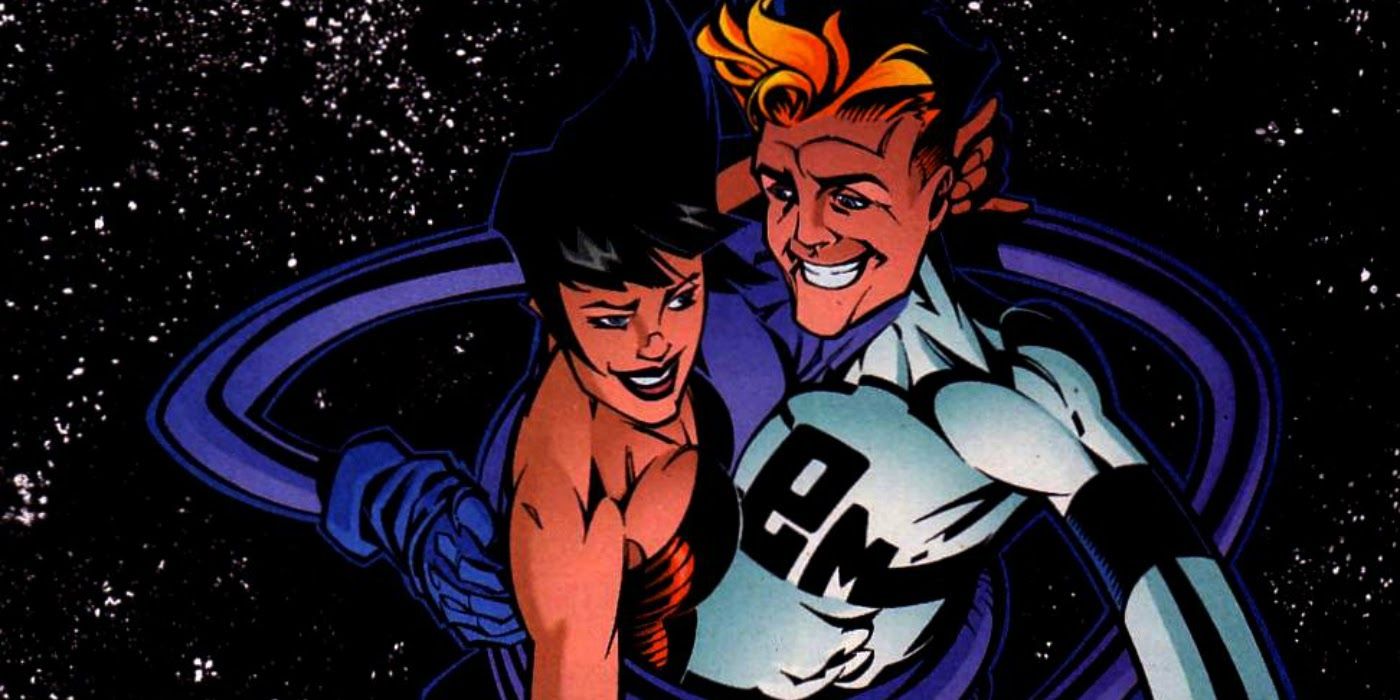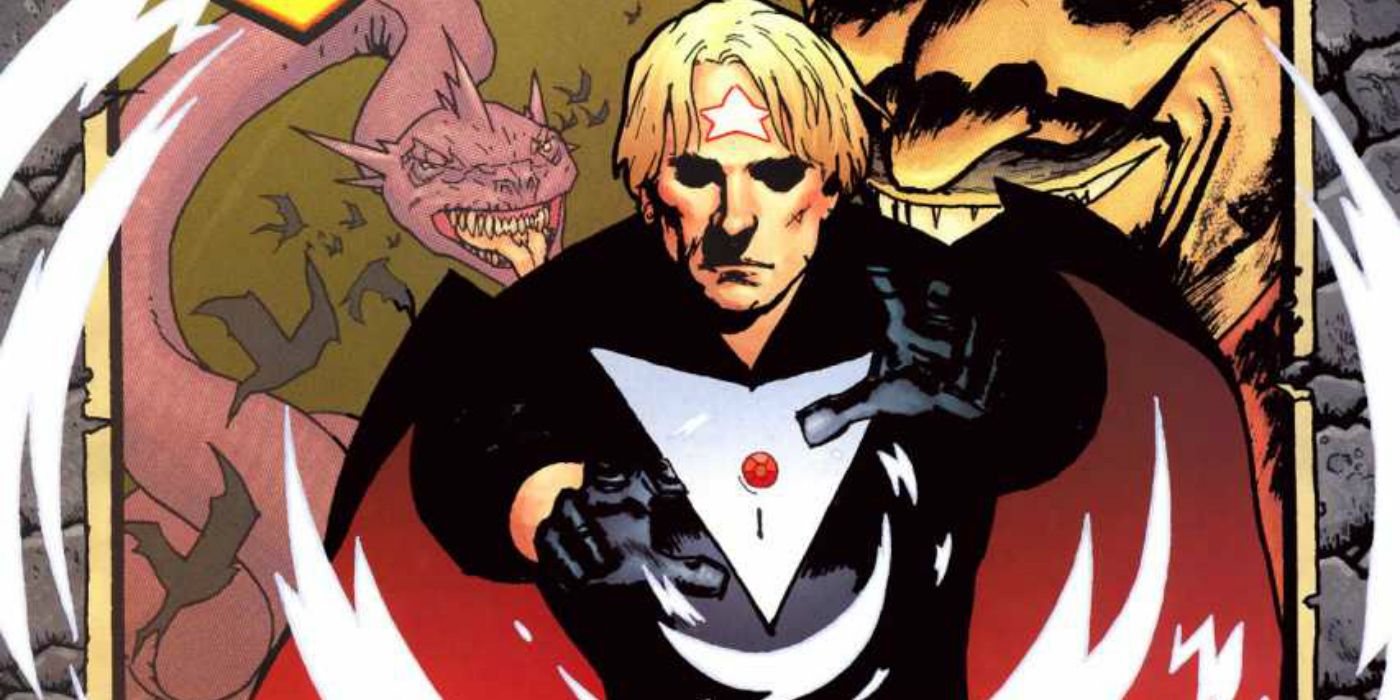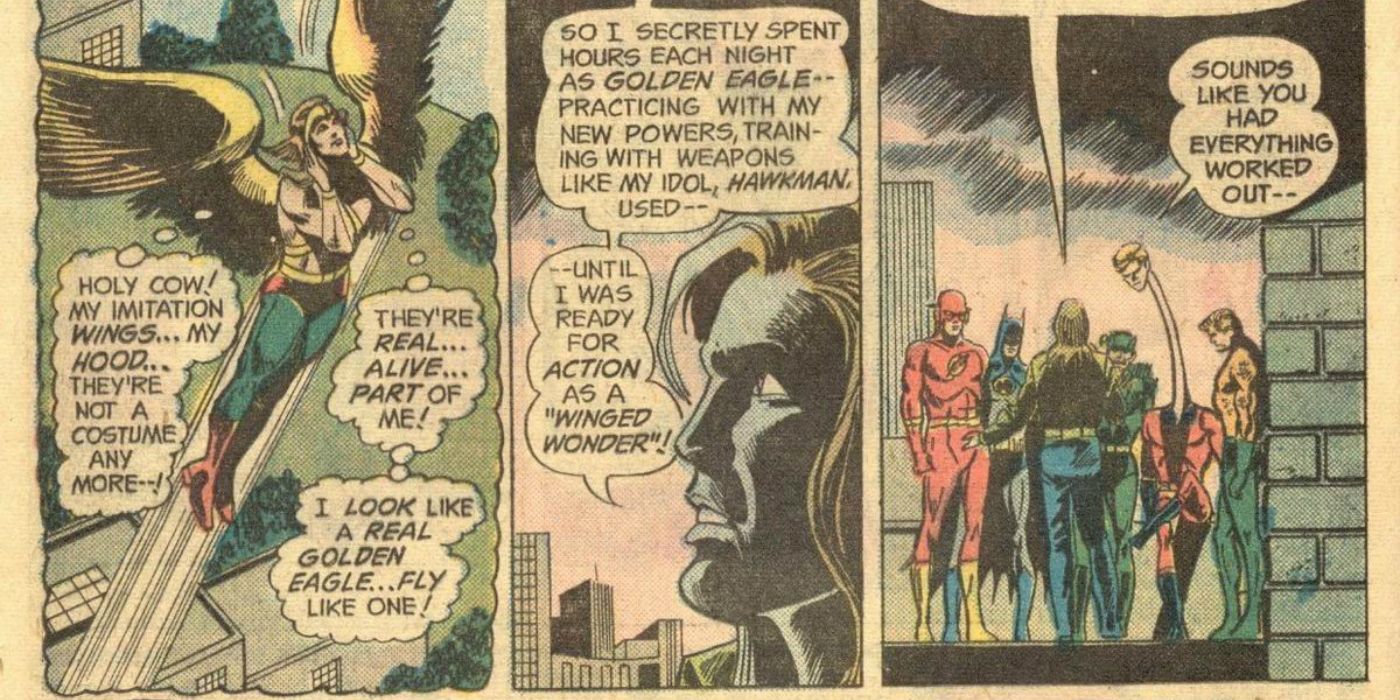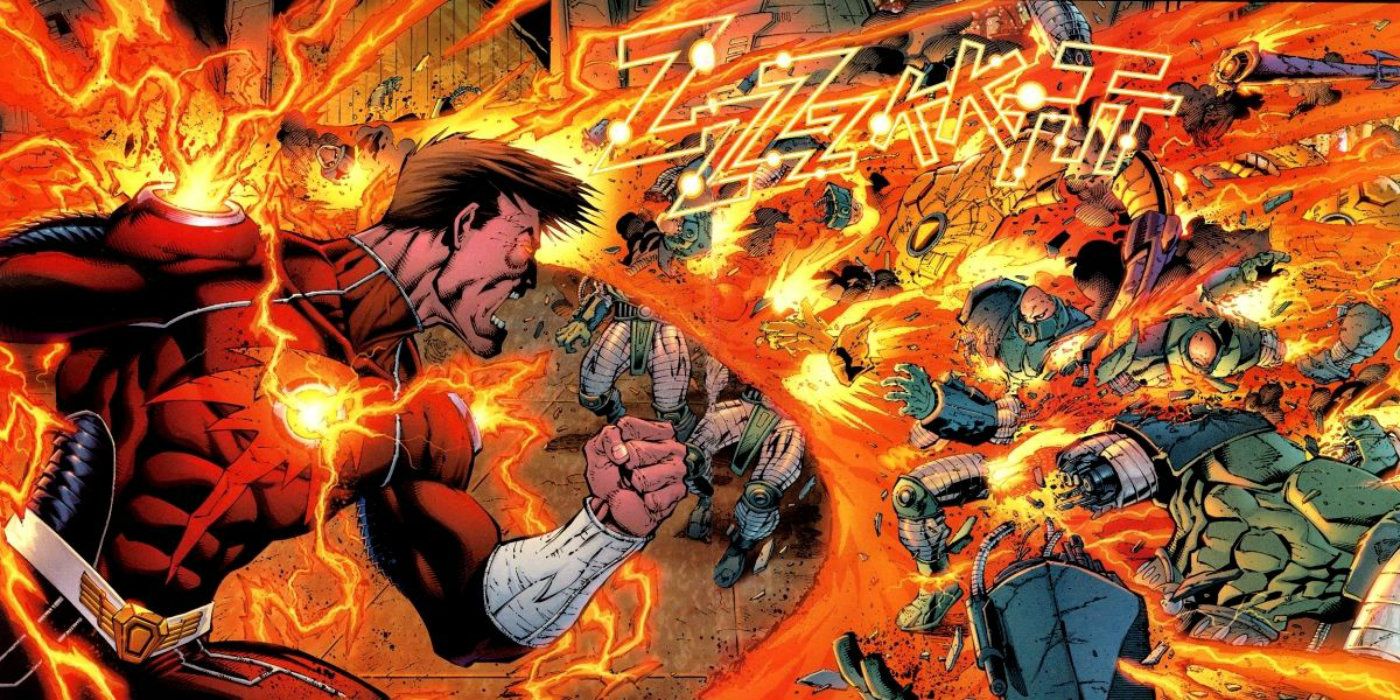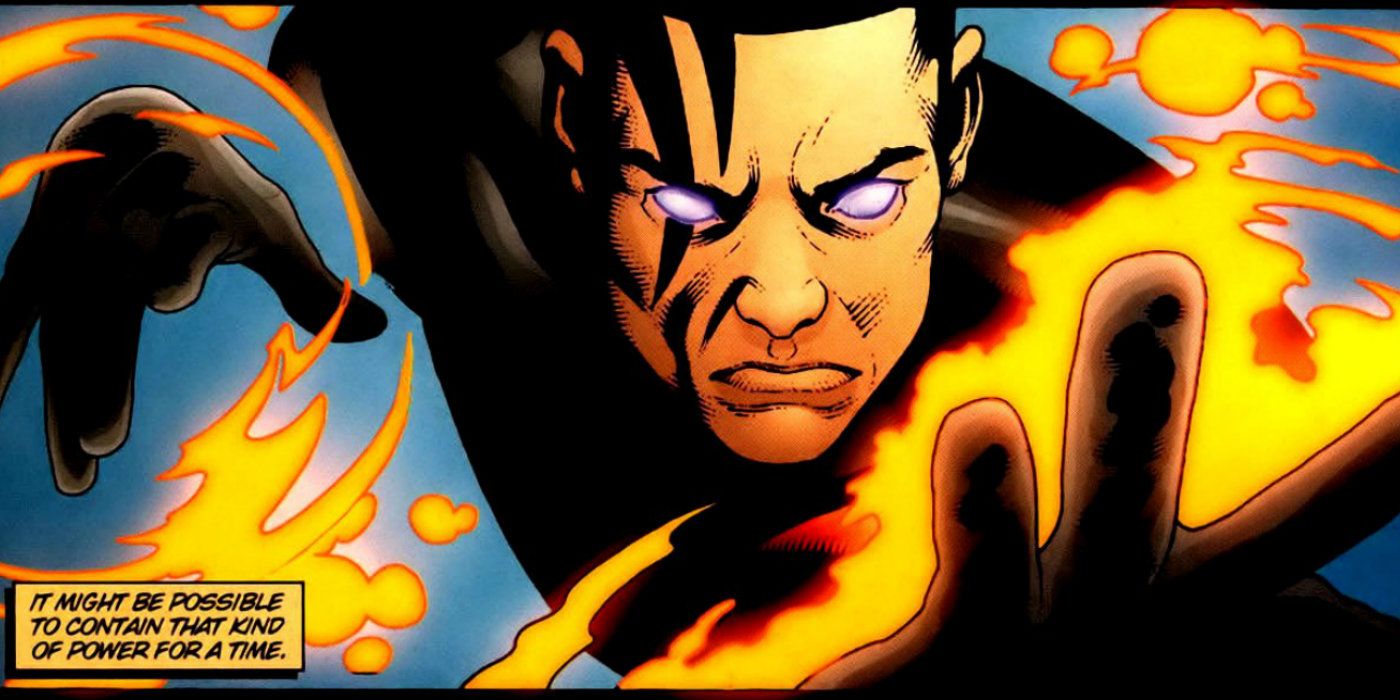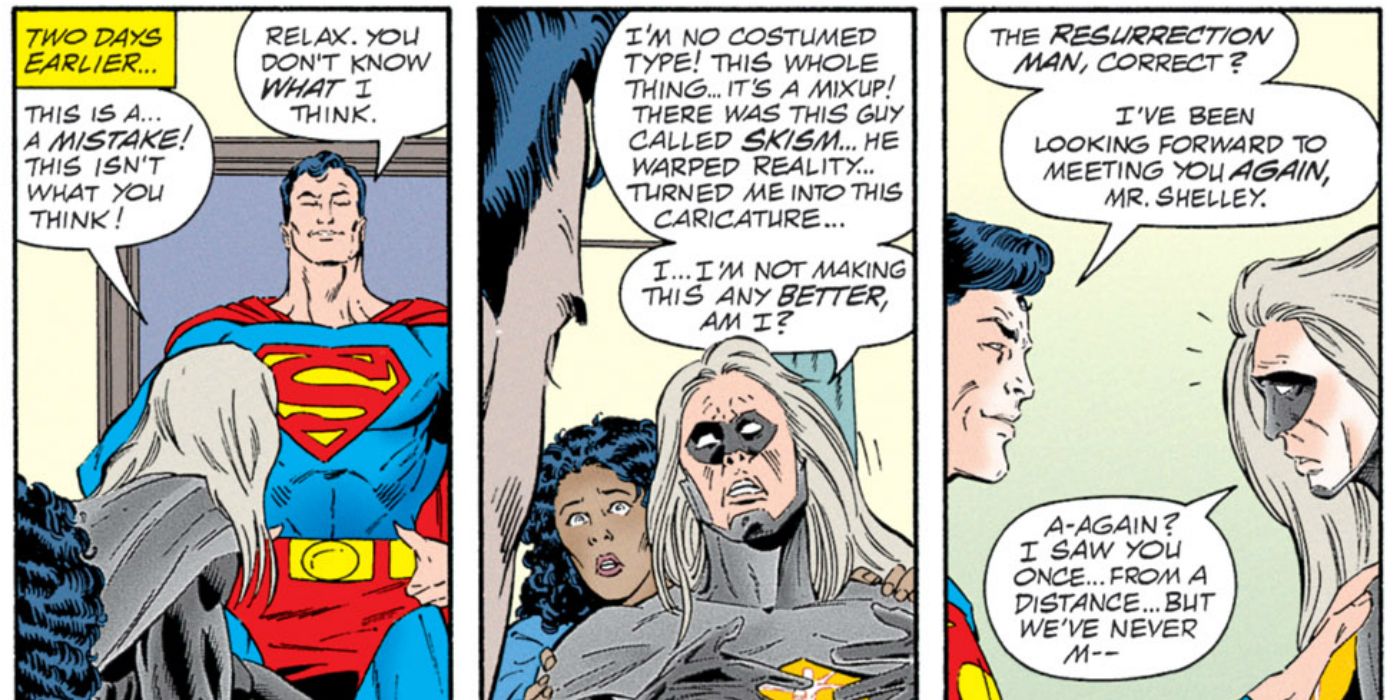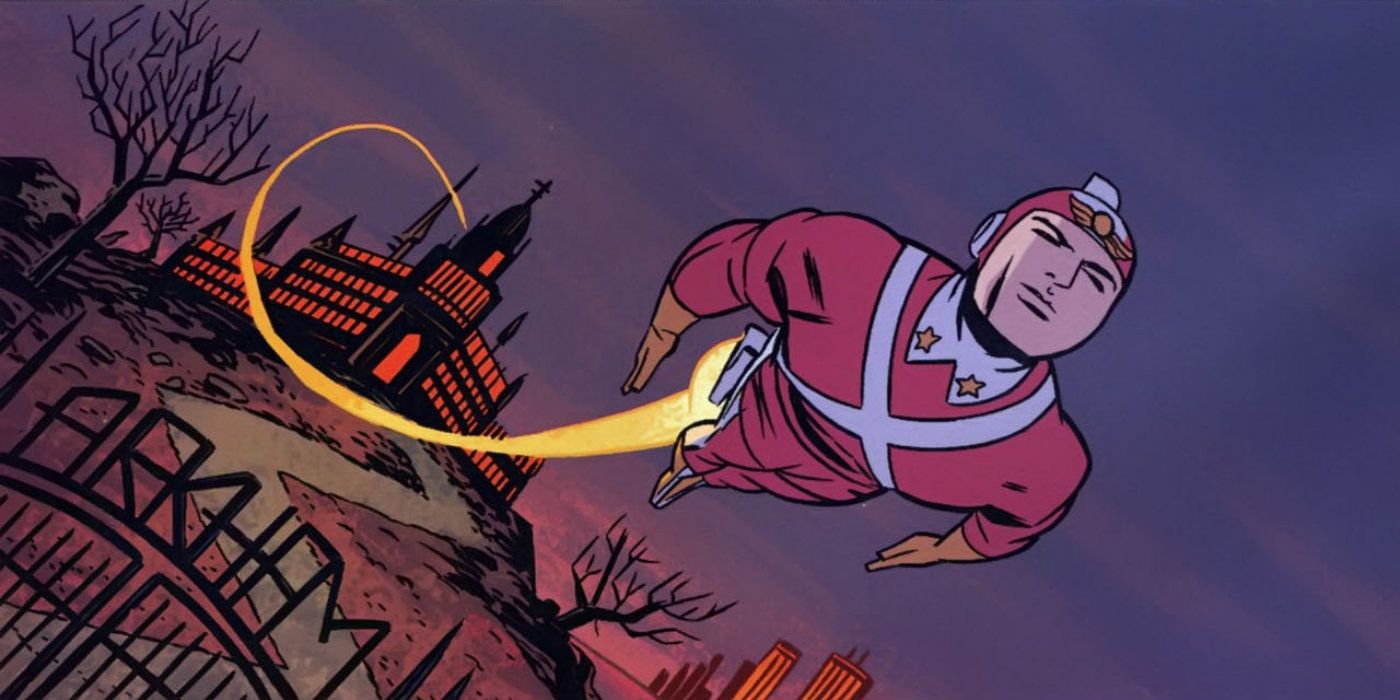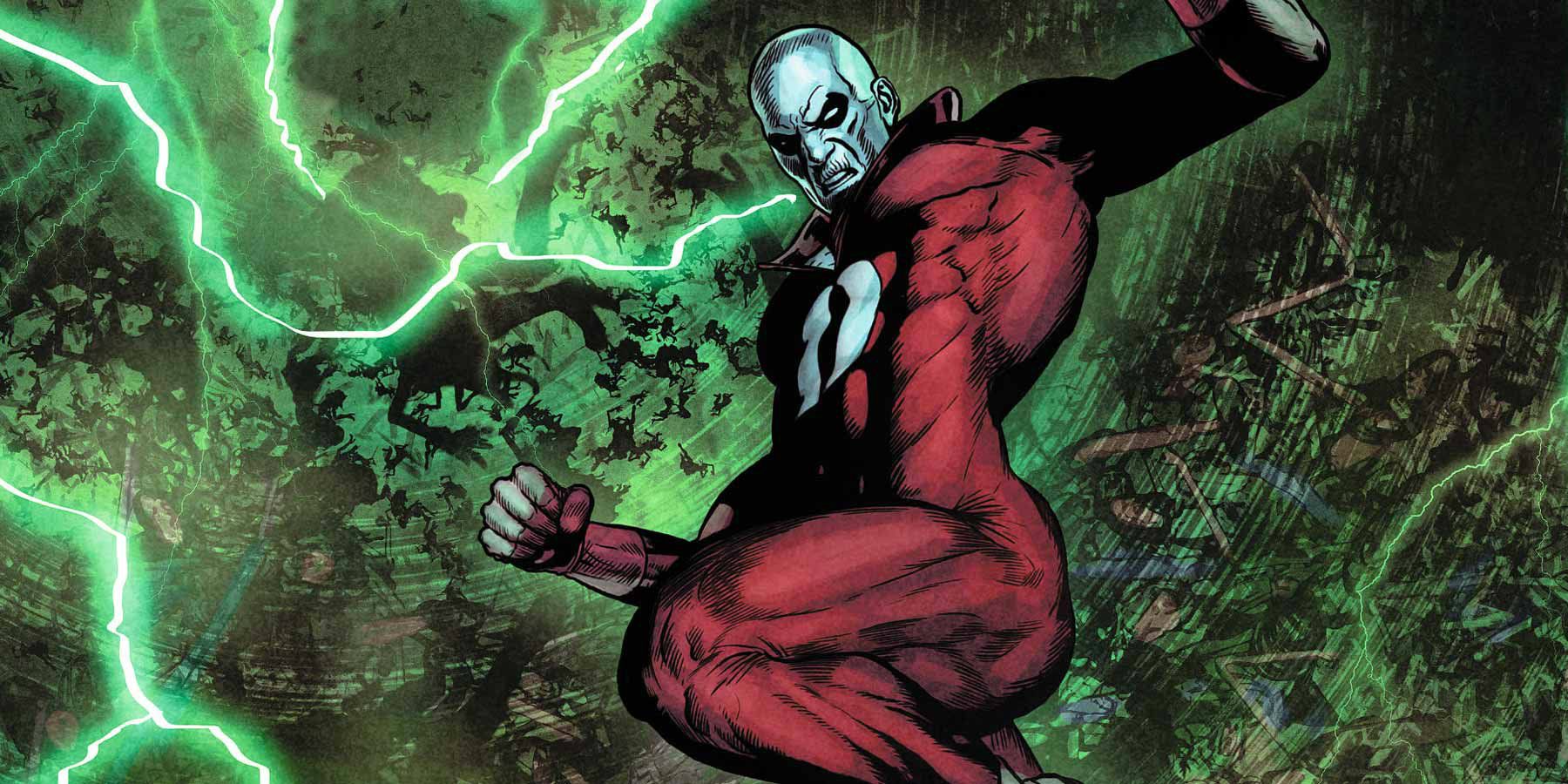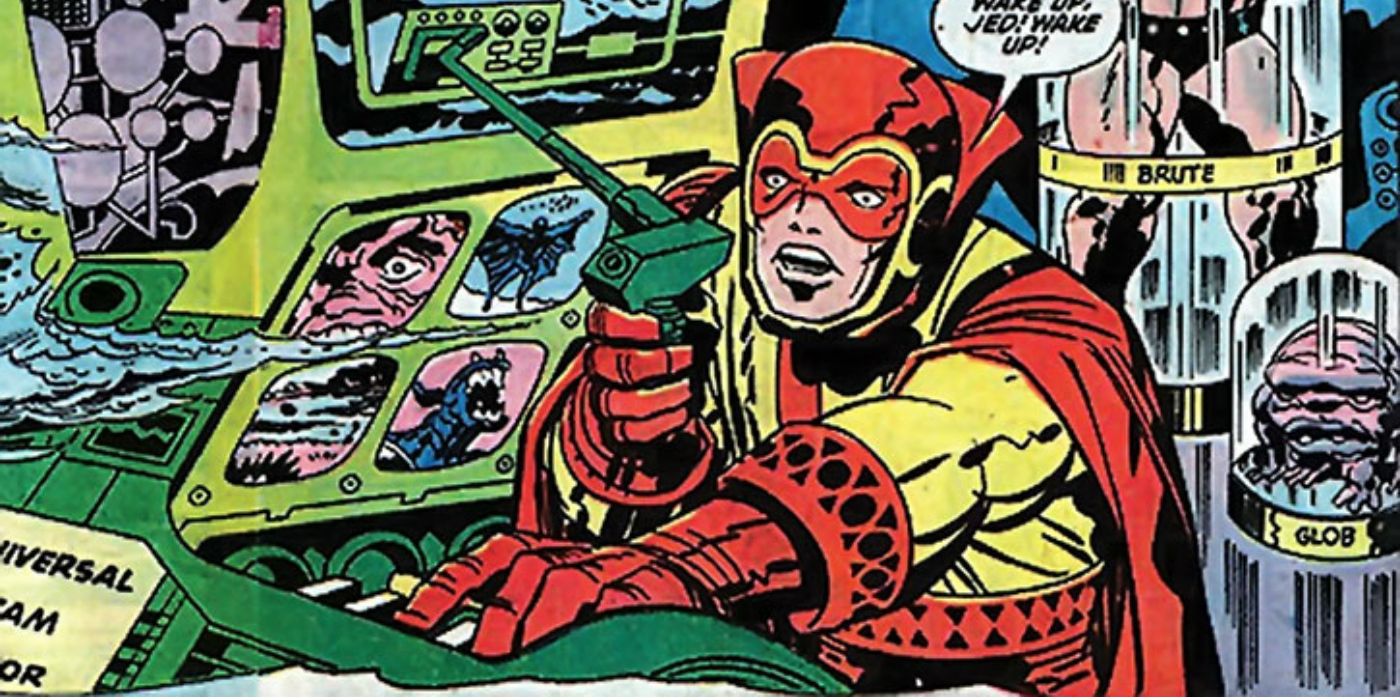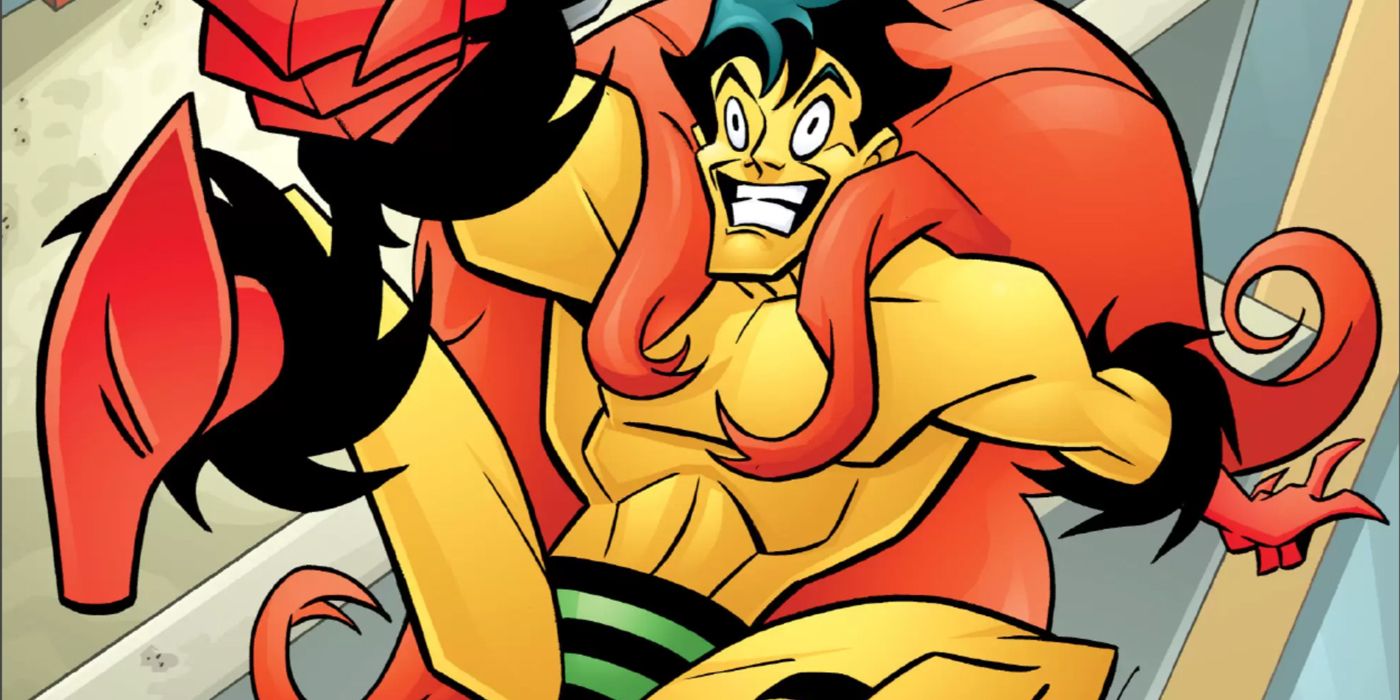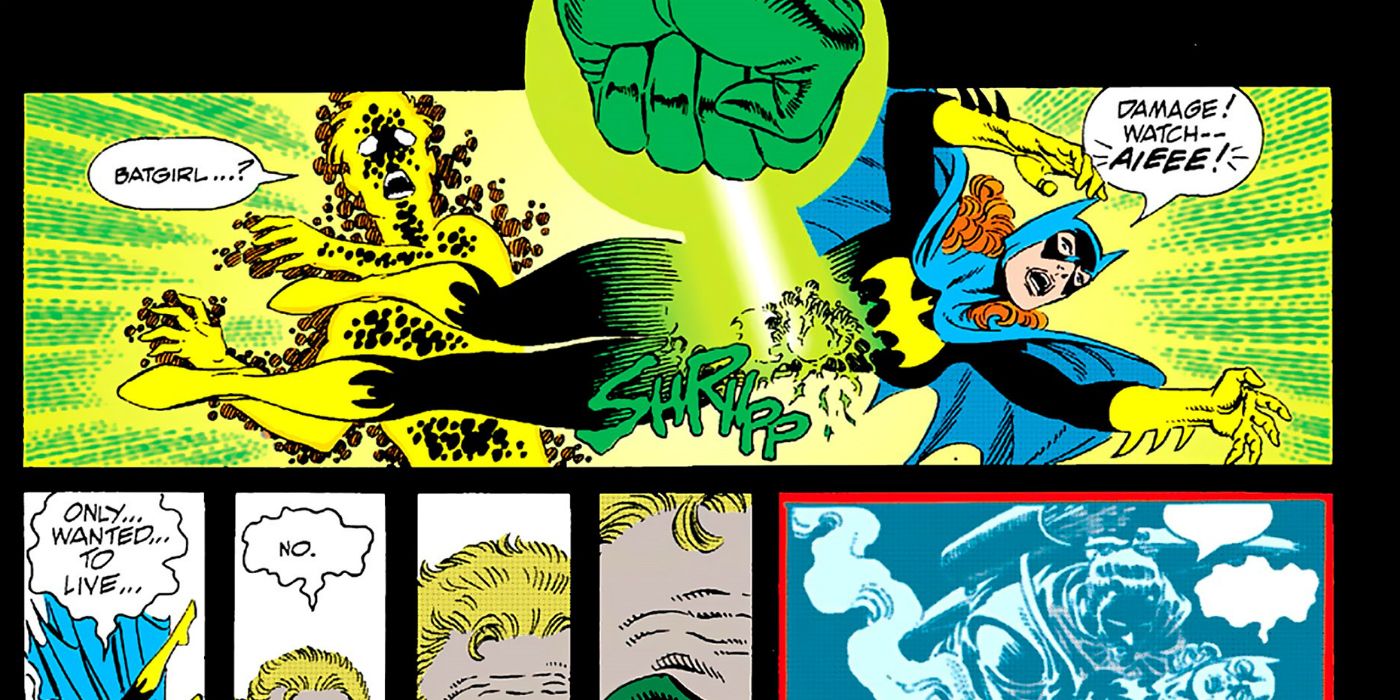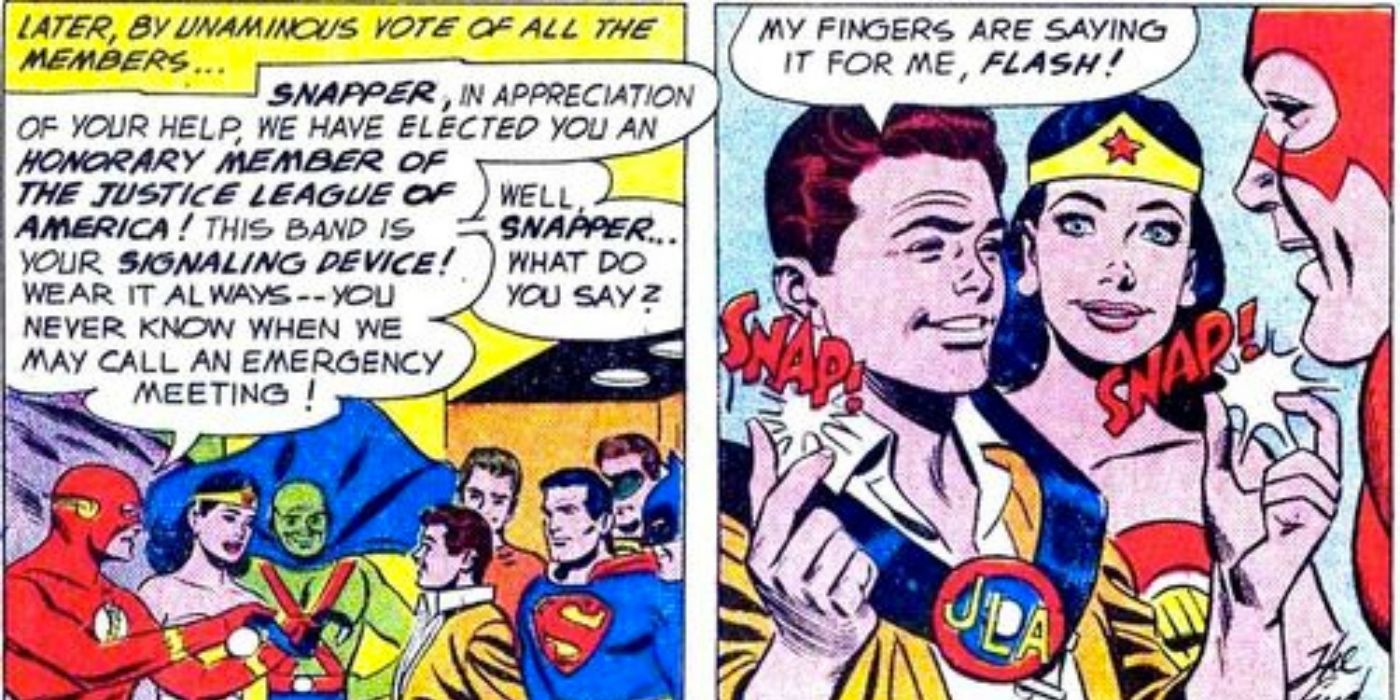Without question, the Justice League is the greatest team of superheroes in the DC universe. While the most powerful and well-known members have been Superman, Batman and Wonder Woman, there have been dozens more lesser-known members who've joined and fought with the League.
RELATED: 15 Times a Criminal Joined the Justice League
Membership in the team is an honor, and not everyone can get into the elite core of the Justice League. Some have been rejected right off the bat, while others have been awarded honorary or temporary membership. These members run the gamut from superheroes with cosmic power to ordinary humans with no powers at all. With 2017's Justice League movie about to bring the team to the big screen, CBR is here to run down the 16 greatest honorary members of the Justice League.
16 PROMETHEUS
In 1998's "New Year's Evil: Prometheus" (Grant Morrison, Arnie Jorgensen), we were introduced to the new honorary member of the Justice League, Retro. Not much is known about Retro, because he was killed pretty quickly by the supervillain who took his place, Prometheus. Retro was a young man who won a contest to become an honorary member of the Justice League for a day, and created his own costume and identity. Unfortunately, he was murdered by Prometheus as part of a complex plan to take his place and destroy the League.
Prometheus was the son of master criminals who were killed in a standoff with police, causing him to train his mind and body to get revenge. He tricked Retro into another dimension he called the Ghost Zone, where he used a recording of the young hero's memories to make himself into Retro. He then killed Retro and took on his appearance. With his new form, Prometheus almost destroyed the League from within. They definitely regretted that contest.
15 BULLETEER
Bulleteer first appeared in the 2005 spin-off "Seven Soldiers: The Bulleteer" #1, created by Grant Morrison and Yanick Paquette. She was partly based on the Fawcett Comics character Bulletgirl, who also influenced her creation. Alix Harrower was the wife of a scientist who created a metallic "smartskin" that could bond to real skin, giving the wearer superhuman strength and durability. The smartskin killed her husband, and bonded to her instead, leaving her to take on a new identity as the Bulleteer.
After leaving the semi-united group the Seven Soldiers, Bulleteer made cameo appearances in "Infinite Crisis," "Final Crisis" and "Birds of Prey," but became a member of an unofficial version of the Justice League of America with Firestorm, Firehawk, Super-Chief and Ambush Bug in "52" #24. She was seen as a reserve member in "Justice League of America" #56 (written by James Robinson and Brett Booth) during the "Rise of Eclipso" event, when she was taken over by the Spirit of Wrath.
14 TATTOOED MAN
Mark Richards was the third version of the Tattooed Man, making his first appearance in 2006's "Green Lantern" #9 (written by Geoff Johns and drawn by Ethan Van Sciver), where he was a hitman working in Gotham City. Richards was a former marine who had survived a helicopter crash and learned to take on the sins of others in the form of tattoos, an art known as "sin-grafting." He would kill victims, leaving them with tattoos of their sins, and claimed to be redeeming them. The upshot was that he could bring his tattoos to life. After being beaten by Green Lantern and Batman, Richards claimed to be done with killing.
During 2009's "Final Crisis" event, Richard saved Black Lightning from Darkseid's army, and helped stop the Anti-Life Equation. Afterwards, the Tattooed Man was offered honorary membership in "Final Crisis" #6 (Grant Morrison, J.G. Jones, Carlos Pacheco, Doug Mahnke, Marco Rudy, Christian Alamy and Jesús Merino).
13 TOYMAN
Another classic character updated to the modern era, Hiro Okamura was a Japanese scientific genius who created highly advanced toys as the third Toyman, introduced in 2002's "Superman" #177 by Jeph Loeb and Ed McGuinness. Whereas the original Toyman was a villain and occasional ally of Superman, Okamura has been more of a helper who created advanced weapons, particularly a giant composite robot of Superman and Batman in "Superman/Batman" #5 so the two heroes could destroy a kryptonite meteor.
In 2008's "Superman/Batman" #49 (Michael Green, Mike Johnson, Shane Davis), Superman and Batman faced Lana Lang, who had given kryptonite weapons to the U.S. government and set off bombs to spread kryptonite dust all over the world to get rid of Kryptonians. Toyman used an army of tiny robots to scour the world of the kryptonite dust in exchange for a date with Power Girl and honorary membership in the League. As a teenage boy, he probably appreciated the Power Girl date most of all.
12 SUE DIBNY
Sue Dibny was created by John Broome and Carmine Infantino in 1961's "Flash" #119 as a romantic partner and wife of the super-stretchy Elongated Man (Ralph Dibny). Dibny was a longtime companion and crime fighting partner as she and the Elongated Man traveled the world solving mysteries. Though she never had superpowers, her wisecracking and affection for her husband made her popular among readers, a breath of fresh air in the increasingly dark and gritty world of comic books.
Dibny also stood out as an administrator of the Justice League when she became an honorary member in 1989's "Justice League International" #24 (Keith Giffen, J.M. DeMatteis, Ty Templeton), when the team officially formed Justice League Europe. As the team's computer expert, she would handle the monitor for distress calls and coordinate missions. Sadly, she was killed in 2004's "Identity Crisis" #1 by Brad Meltzer and Rags Morales, but her death led the entire League to pursue her murderer. She was the soul of the League.
11 SARGON THE SORCERER
John Sargent, better known as Sargon the Sorcerer, first appeared in 1941's "All-American Comics" #26 by John B. Wentworth and Howard Purcell. Sargon was originally a hero during the Golden Age who used a mystical artifact called the Ruby of Life to control whatever he touched. He could touch dollar bills and make them sprout wings or the ground and make it form a wall, for instance. Briefly, he became a villain during the Silver Age, but that was retconned as a side effect of the Ruby, so he still falls on the side of good.
In "Justice League of America" #99, where the Justice League faced a mysterious father and son team of aliens who wanted to grow plants to exterminate animal life, it was first mentioned that Sargon was an honorary member of the Justice League. Unfortunately, Sargon was later killed in 1986's "Swamp Thing" #50 (Alan Moore, Stephen Bissette, Rick Veitch, John Totleben).
10 GOLDEN EAGLE
In "Justice League of America" #116 (1975) by Cary Bates and Dick Dillin, the Golden Eagle was introduced as a replacement for Hawkman. Hawkman had quit from the League in an earlier issue, heading back to Thanagar, leaving the team without its feathered flier. In #116, a young man named Charley Parker was introduced who loved Hawkman and even made his own costume. One day, Parker was shocked when his homemade costume turned into a real Hawkman costume that he could fly in.
Parker quickly used his new costume to take down criminals as the Golden Eagle, drawing the attention of the Justice League because of his resemblance to Hawkman. The Golden Eagle was caught by Mark Mandrill, the Matter Master, Hawkman's old enemy. It turned out that the Golden Eagle was actually made by Mandrill as a subconscious desire because he missed his old enemy. Charley Parker lost his powers, but became an honorary member.
9 CAPTAIN COMET
Captain Comet is a rare character who appeared between the Golden Age and the Silver Age, a time when superheroes were on the decline, and few new superheroes were being created. One of the exceptions was Adam Blake, who debuted in 1951's "Strange Adventures" # 9 by Julius Schwartz, John Broome and Carmine Infantino. Born under a passing comet, Adam Blake was gifted with amazing powers including a photographic memory, Olympic-level strength and agility, telekinesis and mind control. A scientist decided that Blake was an evolutionary oddity, a man of the future born thousands of years ahead of his time. Blake put on a spacesuit as a costume and called himself Captain Comet.
Captain Comet kind of disappeared in the Silver Age, but returned 20 years later with the explanation that he had been traveling the galaxy in search of people like himself. He was tricked into joining the Secret Society of Super Villains, but found his way back to the side of justice. He turned down membership with the Justice League, but in 1977's "DC Special" #27 (Bob Rozakis, Rich Buckler) he earned an honorary membership. Captain Comet's currently a member of the R.E.B.E.L.S.
8 TEMPEST
You may know Tempest by his real name, Garth, or his older name as Aqualad, the faithful teen sidekick of Aquaman. He first appeared in 1960's "Adventure Comics" #269, created by Robert Bernstein and Ramona Fradon, where he had many of the same powers as his mentor, including superhuman speed, strength and the ability to breathe underwater. He became an honorary member of the Justice League at the same time as Aquaman became a full member in "Justice League of America" #1 in 1960.
Later on, Aqualad went out on his own, along with other teen superheroes, as one of the founding members of the Teen Titans. In 1996, Aqualad starred in his own series under the new name of Tempest. He developed new powers, including the ability to heat and cool water, make whirlpools and fiery energy blasts from his eyes. He grew older and broke away from Aquaman, but was killed during "Blackest Night."
7 RESURRECTION MAN
Resurrection Man was created in 1997 by Dan Abnett, Andy Lanning and Butch Guice in his own self-titled series. Originally a lawyer named Mitch Shelley, he became a test subject for nanotechnology that brought him back to life whenever he was killed, giving him a new power along with his birth. The experiment also wiped some of his memory. He traveled the country, searching for answers about who he was and how he got his powers.
Although he started out as a different kind of superhero who didn't wear a flashy costume or joined teams, an exception came in "Resurrection Man" #21 (Dan Abnett, Andy Lanning, Butch Guice, Marlo Alquiza) when he joined the Justice League to fight the matter-powered supervillain Major Force. In the process, he became a probationary member, fighting alongside Superman and Wonder Woman in a new costume. At the end of the issue, he decided it wasn't for him, even though the League thought he had great potential.
6 ADAM STRANGE
Adam Strange is another science-based hero from the 1950s like Captain Comet, first seen in "Showcase" #17 (1958), created by Julius Schwartz and Murphy Anderson. In his debut, Strange was an archaeologist transported from present-day Earth to another planet called Rann by a "Zeta Beam." There, Strange found a new alien civilization, but was teleported back when the beam wore off. His stories continued with Strange constantly scheduling his travels to reach new points where the Zeta Beam would send him back to Rann for more adventures.
Strange wasn't much of a superhero, but that changed when the Justice League fought Kanjar Ro, an alien warlord who tried to conquer Rann. Strange always turned down membership until 1997's "JLA: Secret Files" included a Who's Who by Phil Jimenez that named Strange an honorary member, making it official. Strange also shares another part of his history with Captain Comet, because he's also a member of the paramilitary R.E.B.E.L.S.
5 DEADMAN
Deadman first appeared in "Strange Adventures" #205 (1967), and was created by Arnold Drake and Carmine Infantino. Originally a circus trapeze artist named Boston Brand who wore white makeup and a red outfit as a performer named Deadman, Brand was killed by a contract killer known as the Hook. Deadman was brought back as a ghost by the Hindu god Rama Kushna to avenge his death and fight evil, and given the power to take over other bodies.
Over the years, Deadman has joined the Justice League in different battles, especially thanks to Batman, who helped him solve his murder. Deadman became an honorary member of the Justice League in "Justice League of America" #274, but came into his own as one of the founding members of a new League in "Justice League Dark," created by Peter Milligan and Mikel Janin in 2011. The team is composed of supernatural superheroes, including John Constantine and Zatanna.
4 SANDMAN
Created by Jack Kirby and Joe Simon, "The Sandman" premiered in 1974 as a mystical being who worked to protect kids from nightmares or help them have nightmares to deal with anxieties of life. He was originally the literal Sandman, despite his costume, but that changed in 1983's "Wonder Woman" #300 (Roy Thomas) in a retcon. That issue set up the Sandman as a psychology professor at UCLA named Dr. Garrett Sanford, who became trapped in the Dream Dimension. He could only leave the Dream Dimension for an hour at a time.
In "Justice League of America Annual" #1 (1983) by Paul Levitz and Len Wein, the League fought Doctor Destiny, who had trapped the Sandman and the rest of the team. The Sandman helped them escape, and was offered a full membership in the League, but he declined and settled for an honorary membership because he couldn't leave the Dream Dimension for more than an hour at a time.
3 CREEPER
In 1968's "Showcase" #73, Steve Ditko created the Creeper, a talk show host named Jack Ryder who put on a goofy outfit to hide his identity while trying to save a scientist from gangsters. Ryder was injured and kept alive by a scientist who injected him with a serum that gave him heightened speed and agility, along with the power to heal almost instantly, and also implanted a device that let him change into his costume. With his new powers, a psychotic personality and a wild costume, the Creeper fought criminals while Ryder kept his alter ego a secret.
In "Justice League International" #27, the Creeper was one of the superheroes gathered together to try out for the new European branch of the Justice League. He had to settle for becoming an honorary member, but has continued to be a part of the League's adventures, jumping onto criminals' backs for decades.
2 BATGIRL
This one will take some explaining, because when we talk about Batgirl, we're talking about a different one than we're used to. Since the 1960s, Barbara Gordon had been active as Batgirl, but in 1988’s “The Killing Joke” (by Alan Moore and Brian Bolland), Gordon was shot and paralyzed by the Joker. Many of her fans were upset with how she was treated, and DC decided to fix that with alternate realities. In 1994, Dan Jurgen and Jerry Ordway's “Zero Hour: Crisis in Time” introduced the supervillain Extant who teamed up with Hal Jordan (as Parallax) to wipe out the future of the DC universe to create a new one.
One of the big changes that came from the series was a new Barbara Gordon from an alternate timeline where the Joker never paralyzed her. As Batgirl, she almost helped Parallax with his crazy scheme until Parallax fired an energy beam to kill another hero named Damage. Batgirl jumped in front of the beam, killing herself, but saving the universe. For her sacrifice, she was made an honorary member of the Justice League.
1 SNAPPER CARR
Unlike most of the other heroes on this list, Carr earned his honorary membership in his very first appearance and kept it for decades without ever becoming a full member. Lucas "Snapper" Carr was introduced in 1960's "The Brave and The Bold" #28 (Gardner Fox and Mike Sekowsky) as a non-powered character meant to appeal to the teenage audience. During a global invasion by the alien Starro, Carr accidentally discovered lime could repel the alien. For his help, the League made him an honorary member and mascot of the team. Equipped with a signal belt and a flying hot rod, Carr would work with the League and maintain their Secret Sanctuary headquarters.
This changed for Carr in a big way in 1969's "Justice League of America" #77 by Dennis O'Neill and Dick Dillin. In the story, Carr was tricked by the Joker into betraying the League, and quit in disgrace. Carr redeemed himself later and is currently active as a member of Checkmate.
What superheroes would you like to see as honorary members of the Justice League? Let us know in the comments!

